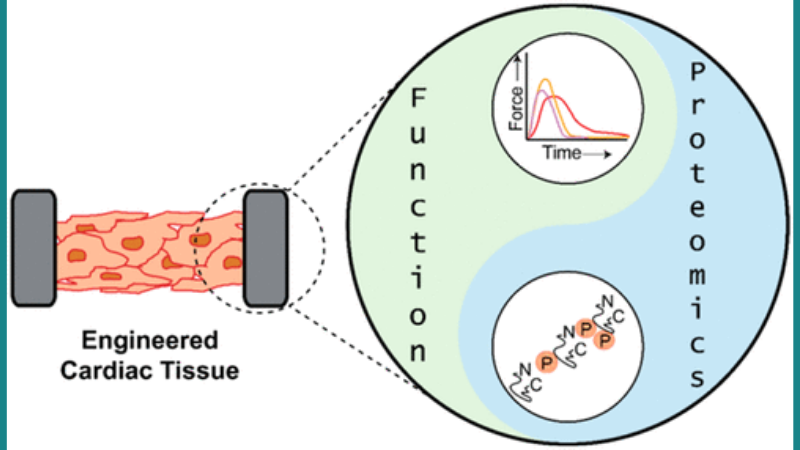Three-dimensional (3D) human induced pluripotent stem cell-derived engineered cardiac tissues (hiPSC-ECTs). Image courtesy of Melby et al. (2021).
This publication review summarizes some of the best recent articles that fall under our Material Science category.
Fast and High-Strain Electrochemically Driven Yarn Actuators in Twisted and Coiled Configurations
In this article by Aziz et al. (2021), the authors demonstrated a method to produce new polyamide multifilament textile yarns. While yarns that are coated with electrochemically driven conducive polymer (CP) already exist, they suffer from not being fully practical. The authors used our 300B lever system to keep their yarns constantly isometric while they tested cyclic voltammetry for both twisted and coiled yarn. Thanks to our system the authors were able to test the electrochemical characteristics of their yarn that they produced using a novel method. In the future, these yarns can be used to create smart textiles that are electrochemomechanically active.
Functionally Integrated Top-Down Proteomics for Standardized Assessment of Human Induced Pluripotent Stem Cell-Derived Engineered Cardiac Tissues
In this article, Melby et al. (2021) discovered a new way to perform assessments on three-dimensional (3D) human induced pluripotent stem cell-derived engineered cardiac tissues (hiPSC-ECTs). Two-dimensional hiPSC-ECTs are not as powerful an index of endogenous cardiac tissues as 3D ones, but there needed to be a reliable method to assess functional performance and molecular properties on 3D hiPSC-ECTs. Using our 1500A Isolated Muscle System the authors were able to characterize mechanics of their engineered cardiac tissue including twitch force production. Overall, their work will be able to ensure that these engineered 3D hiPSC-ECTs will be applicable in disease modeling.
Ionic Shape-Morphing Microrobotic End-Effectors for Environmentally Adaptive Targeting, Releasing, and Sampling.
Finally, in this article by Zheng et al. (2021), alginate hydrogel microstructures were used to assist microrobots in responding to different environmental stimuli. Living beings are constantly responding by shape-morphing but biomimicking microrobots find this difficult to accomplish. Using the 405A Force Transducer, the authors measured the elastic force of their ionic shape-morphing microrobotic end-effectors (ISMEs). These microstructures were able to complete tasks using a structural intelligence that has applications in numerous smart materials as well as less invasive medical procedures.




